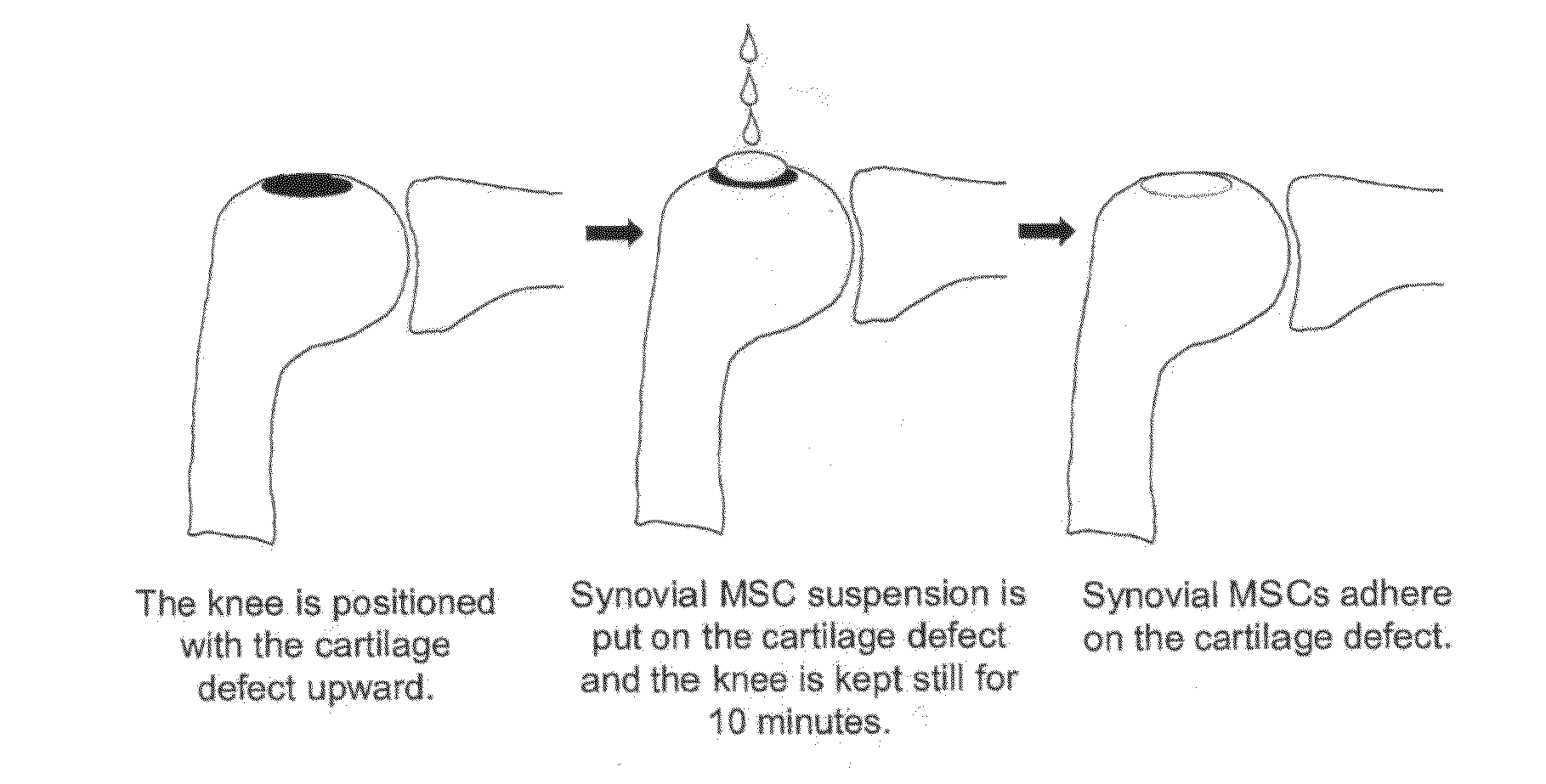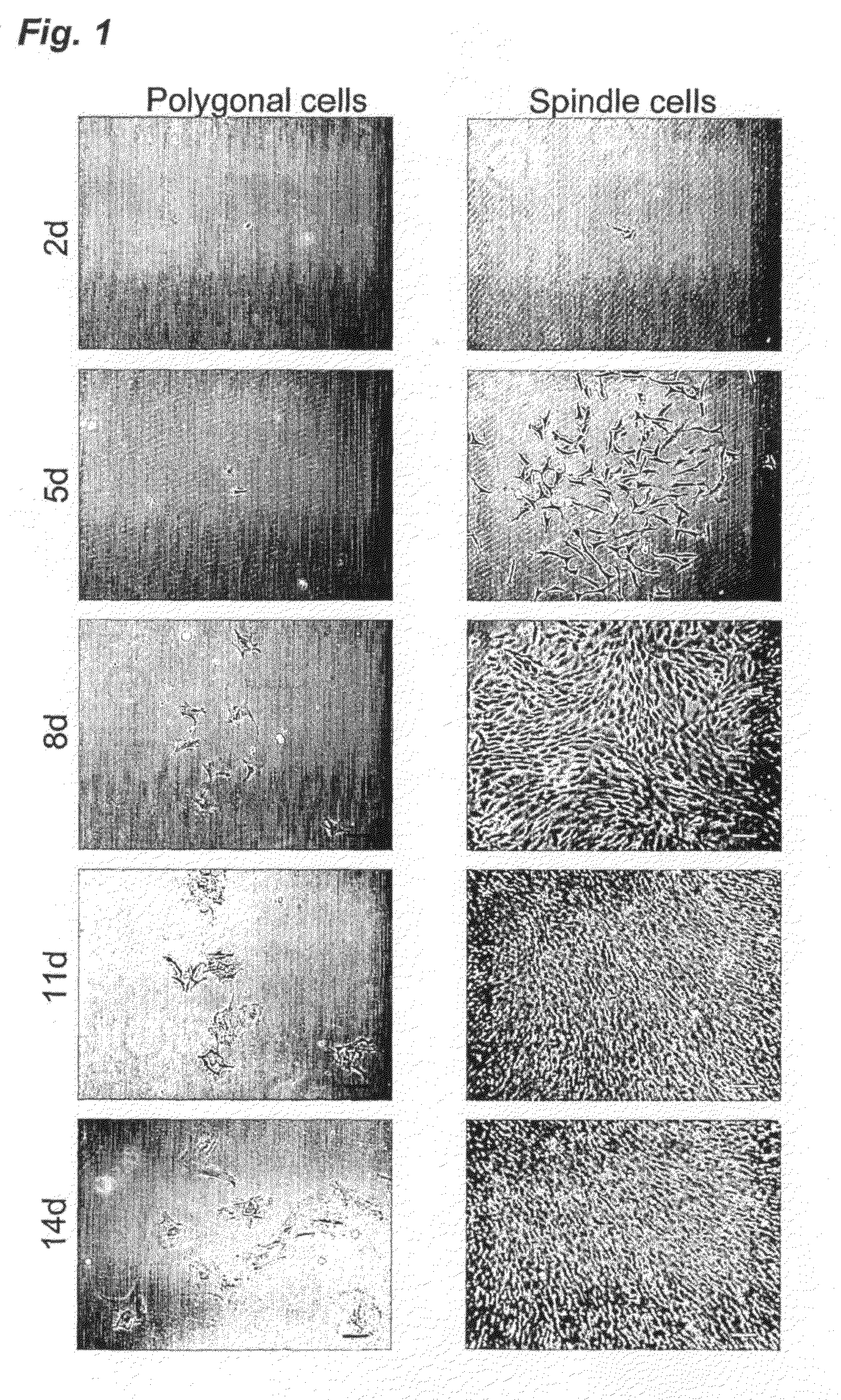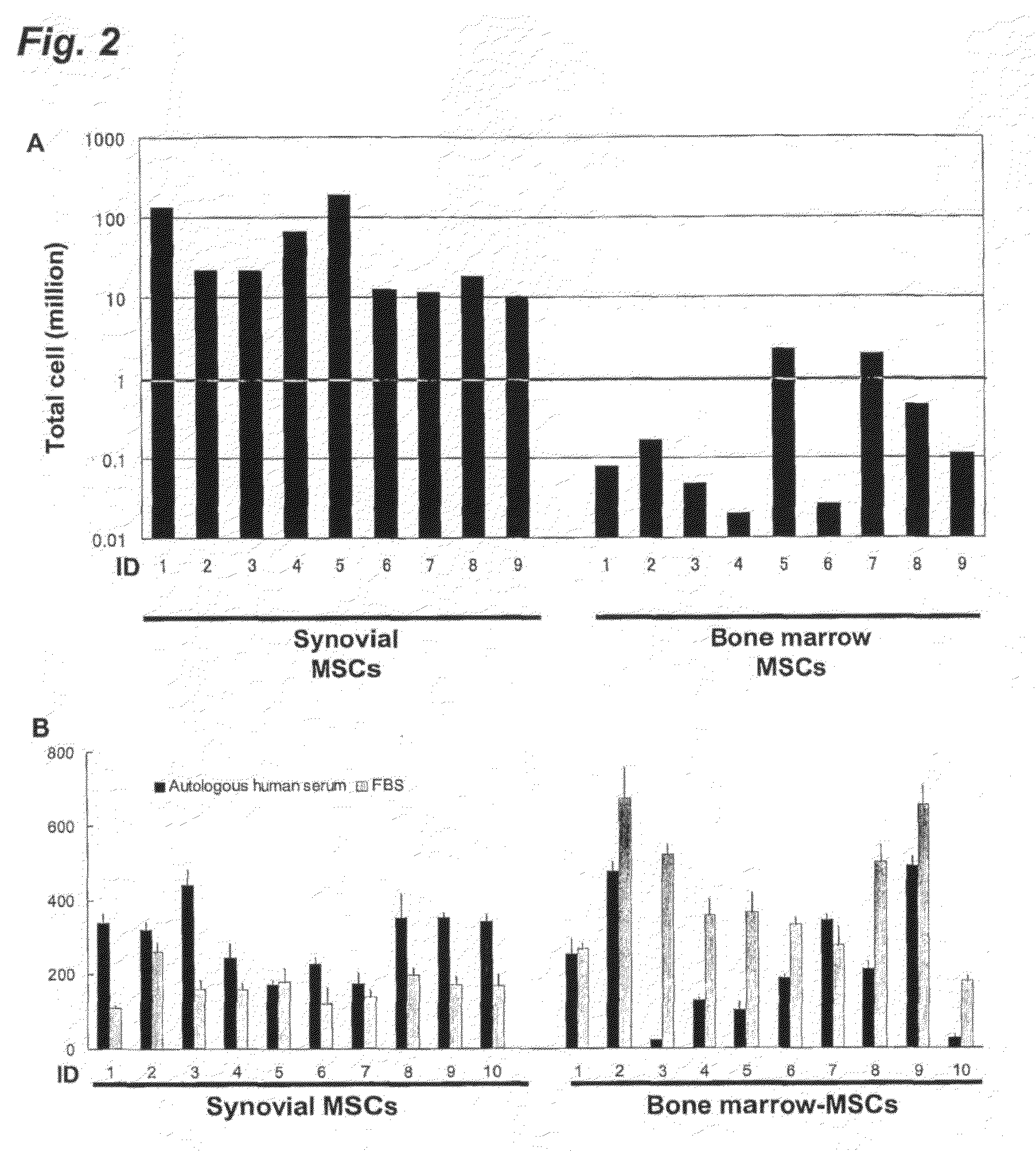Application of synovium-derived mesenchymal stem cells (MSCS) for cartilage or meniscus regeneration
a technology of mesenchymal stem cells and synovium, which is applied in the direction of skeletal/connective tissue cells, drug compositions, biocide, etc., can solve the problems of unpredictable therapeutic effect damage to healthy cartilage tissue, etc., and achieves greater ex vivo expansion and chondrogenic ability
- Summary
- Abstract
- Description
- Claims
- Application Information
AI Technical Summary
Benefits of technology
Problems solved by technology
Method used
Image
Examples
example 1
Isolation of Rabbit Synovium-Derived MSCs
[0068]This example is provided to describe a method for obtaining synovium-derived MSCs from rabbits.
[0069]Skeletally mature Japanese White Rabbits weighing about 3.2 kg (ranging 2.8-3.6 kg) were used in the experiments. Animal care was strictly in accordance with the guidelines of the animal committee of Tokyo Medical and Dental University. Synovium was harvested under anesthesia induced by intramuscular injection of 25 mg / kg of ketamine hydrochloride and intravenous injection of 45 mg / kg of sodium pentobarbital.
[0070]Harvested rabbit synovium was digested in a 3 mg / ml collagenase D solution (Roche Diagnostics, Mannheim, Germany) in αMEM (Invitrogen, Carlsbad, Calif., USA) at 37° C. After 3 hours digestion, digested cells were filtered through a 70-μm nylon filter (Becton Dickinson, Franklin Lakes, N.J., USA) and the remaining tissues were discarded.
[0071]The obtained cells were plated at 5×104 cells / cm2 in 60-cm2 culture dishes (Nalge Nunc ...
example 2
Isolation and Characterization of Human Synovium-Derived MSCs with Autologous Human Serum
[0073]In this example, the inventors isolated human synovium-derived MSCs and bone marrow-derived MSCs and identified the characterization thereof.
(i) Isolation of Human MSCs and Proliferative Effect Thereof
[0074]The study was approved by the local institutional review board, and all human study subjects provided informed consent. Human synovium and bone marrow were harvested during the operation of anterior cruciate ligament (ACL) reconstruction of the knee from 8 donors (27±5 years old).
[0075]Bone marrow from the tibia was obtained with an 18-gauge needle just before drilling for the insertion of reconstructed ligaments. Synovium with subsynovial tissue from the inner side of the medial joint capsule, which overlies the noncartilaginous areas of the medial condyles of the femur, was harvested with a pituitary rongeur, under arthroscopic observation. One day before the operation of ACL reconstr...
example 3
Chondrogenic Ability of Synovium-Derived MSCs
[0088]This example is provided to identify the chondrogenic ability of rabbit synovium-derived MSCs ex vivo.
[0089]For ex vivo chondrogenesis, 250,000 cells were placed in a 15-ml polypropylene tube (Becton Dickinson, Franklin Lakes, N.J., USA) and were centrifuged at 450 g for 10 min. The pellet was cultured in a chondrogenesis medium consisting of high-glucose Dulbecco's modified Eagle's medium (DMEM high glucose; Invitrogen Corp, Carlsbad, Calif., USA) supplemented with 500 ng / ml BMP-2 (bone morphogenetic protein-2; Yamanouchi Pharmaceutical, Tokyo, Japan), 10 ng / ml TGF-β3 (transforming growth factor-β3; R&D Systems. Minneapolis, Minn., USA), 10−7M dexamethasone (Sigma-Aldrich Corp. St. Louis, Mo., USA), 50 μg / ml ascorbate-2-phosphate, 40 μg / ml proline, 100 μg / ml pyruvate, and 1:100 diluted ITS+Premix (BD Biosciences. Bedford, Mass., USA; 6.25 μg / ml insulin, 6.25 μg / ml transferrin, 6.25 ng / ml selenious acid, 1.25 mg / ml BSA, and 5.35 mg / ...
PUM
 Login to View More
Login to View More Abstract
Description
Claims
Application Information
 Login to View More
Login to View More - R&D
- Intellectual Property
- Life Sciences
- Materials
- Tech Scout
- Unparalleled Data Quality
- Higher Quality Content
- 60% Fewer Hallucinations
Browse by: Latest US Patents, China's latest patents, Technical Efficacy Thesaurus, Application Domain, Technology Topic, Popular Technical Reports.
© 2025 PatSnap. All rights reserved.Legal|Privacy policy|Modern Slavery Act Transparency Statement|Sitemap|About US| Contact US: help@patsnap.com



